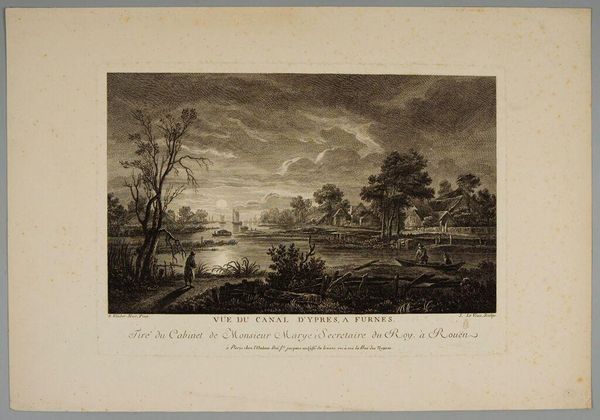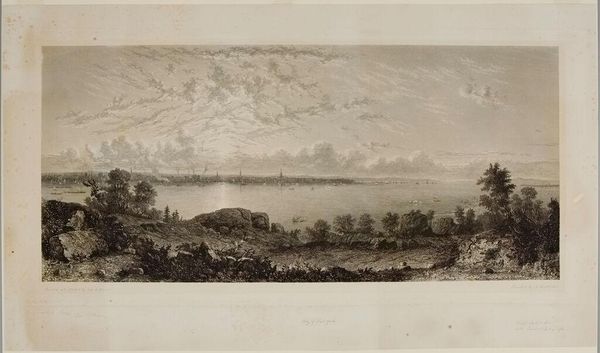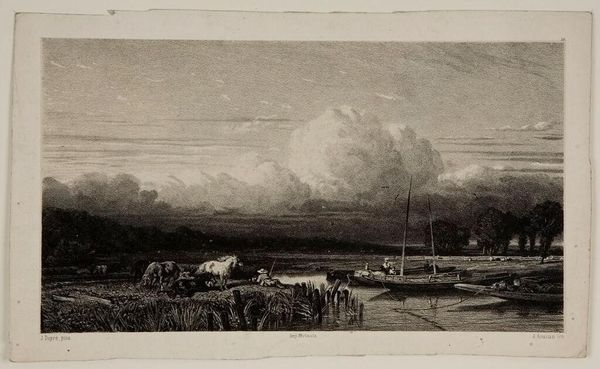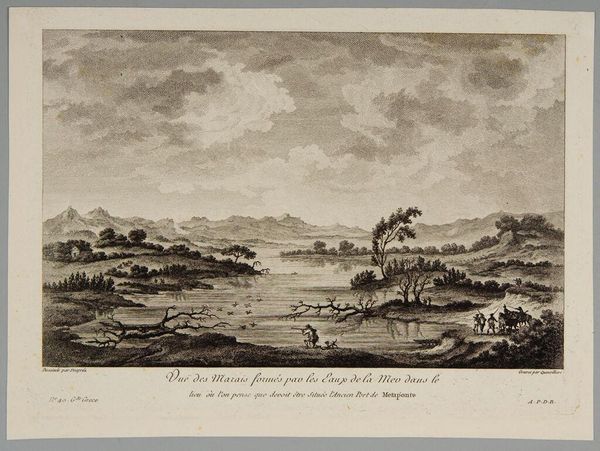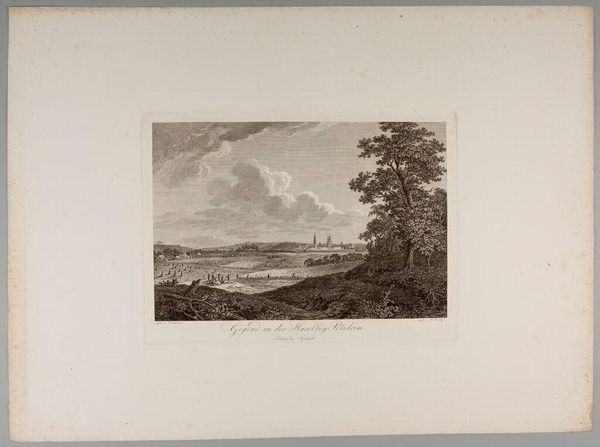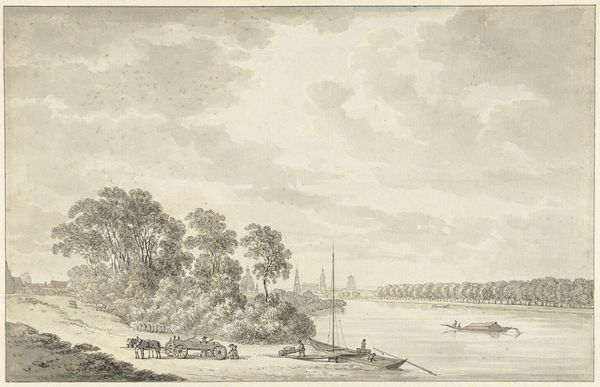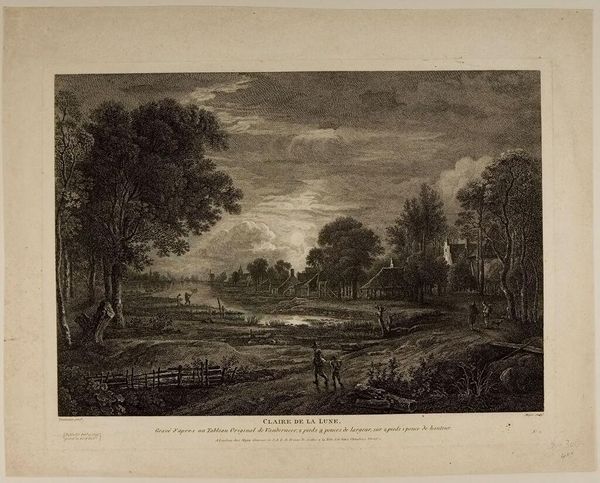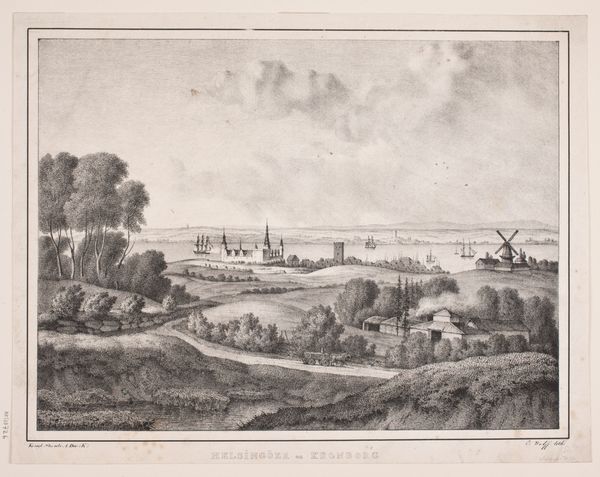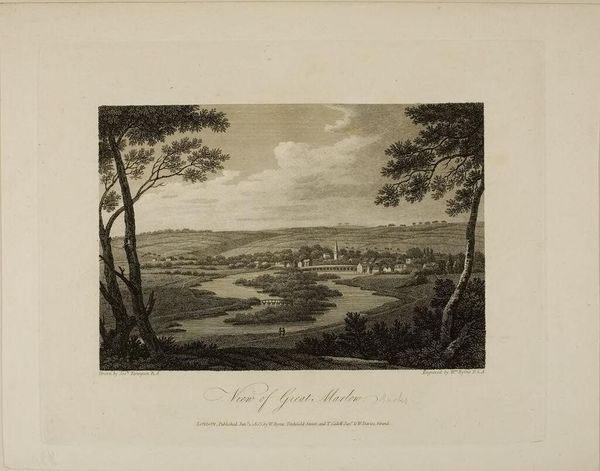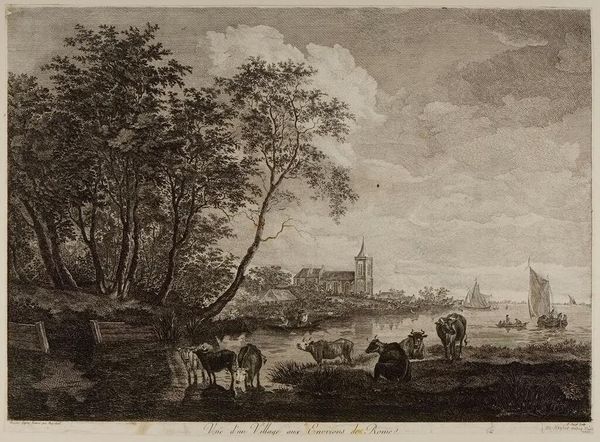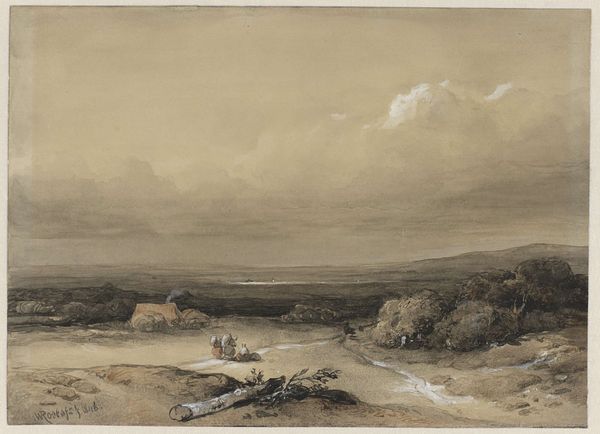
Landscape c. 18th century
Copyright: CC0 1.0
Curator: Here we have "Landscape" by Jean-Baptiste-Claude Chatelain, created around the mid-18th century. The scene presents a broad vista, seemingly idealized, of land meeting water. Editor: It feels incredibly tranquil. The etching's sepia tones give it an antique feel, but I also detect a latent feeling of impending change. The sky looks turbulent. Curator: I agree. The social order was shifting profoundly during Chatelain's time. Landscapes became potent signifiers of power, property, and the picturesque. Note how labor is romanticized here, with a separation of the working class from the leisure class. Editor: The windmill and sailing ships do stand out, don't they? They feel like emblems of progress. Yet the cottages appear older, with a rural modesty. It's a blend of nostalgia and forward-thinking ambition. Curator: The contrast certainly speaks to larger historical currents. It's this tension between pastoral and urban that makes this landscape so compelling, offering insight into the changing relationship of social classes. Editor: And visually, that tension is captivating. I find myself thinking about memory and continuity in the symbolism used here. Curator: Absolutely. And those symbols are embedded within a very specific social and historical matrix. Editor: This has given me new angles to think about the emotional weight of landscape art. Curator: Indeed, it's always enriching to consider how these historical works speak to our understanding of social dynamics today.
Comments
No comments
Be the first to comment and join the conversation on the ultimate creative platform.
